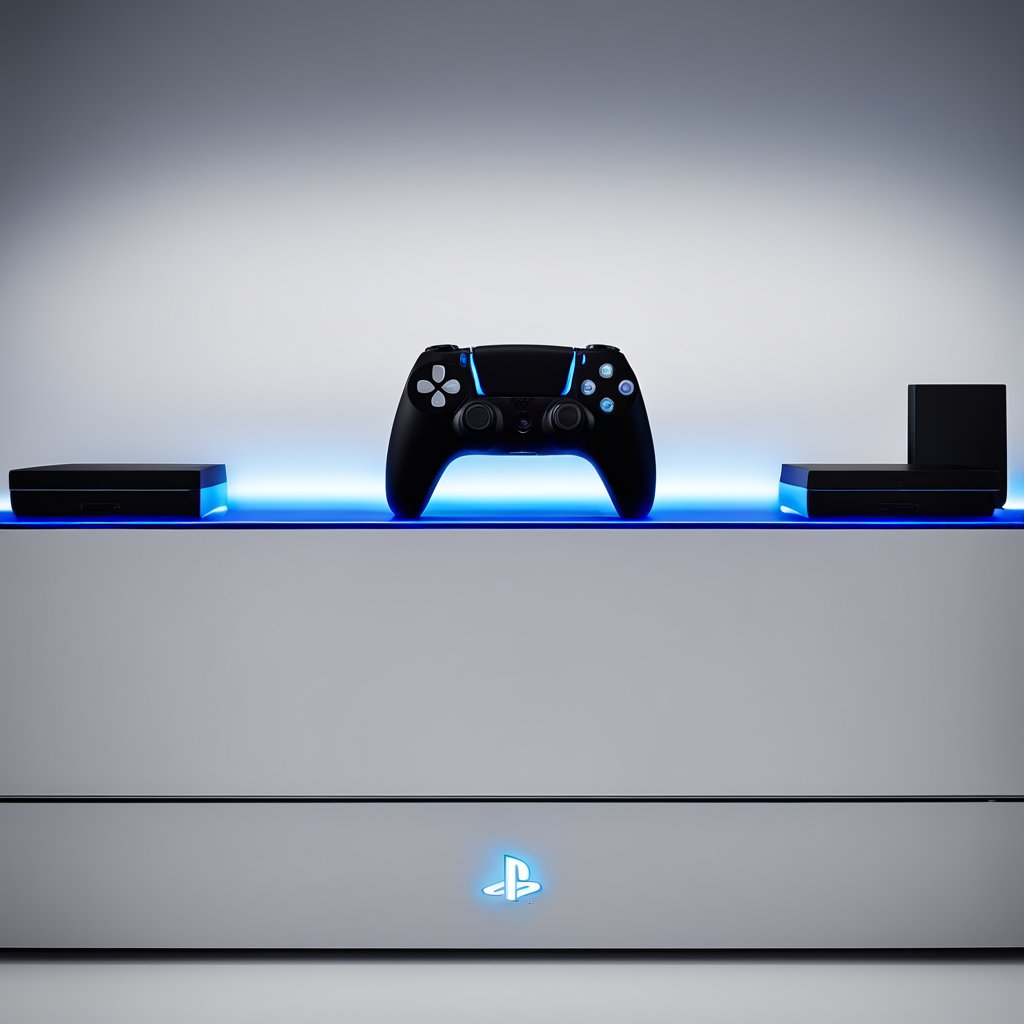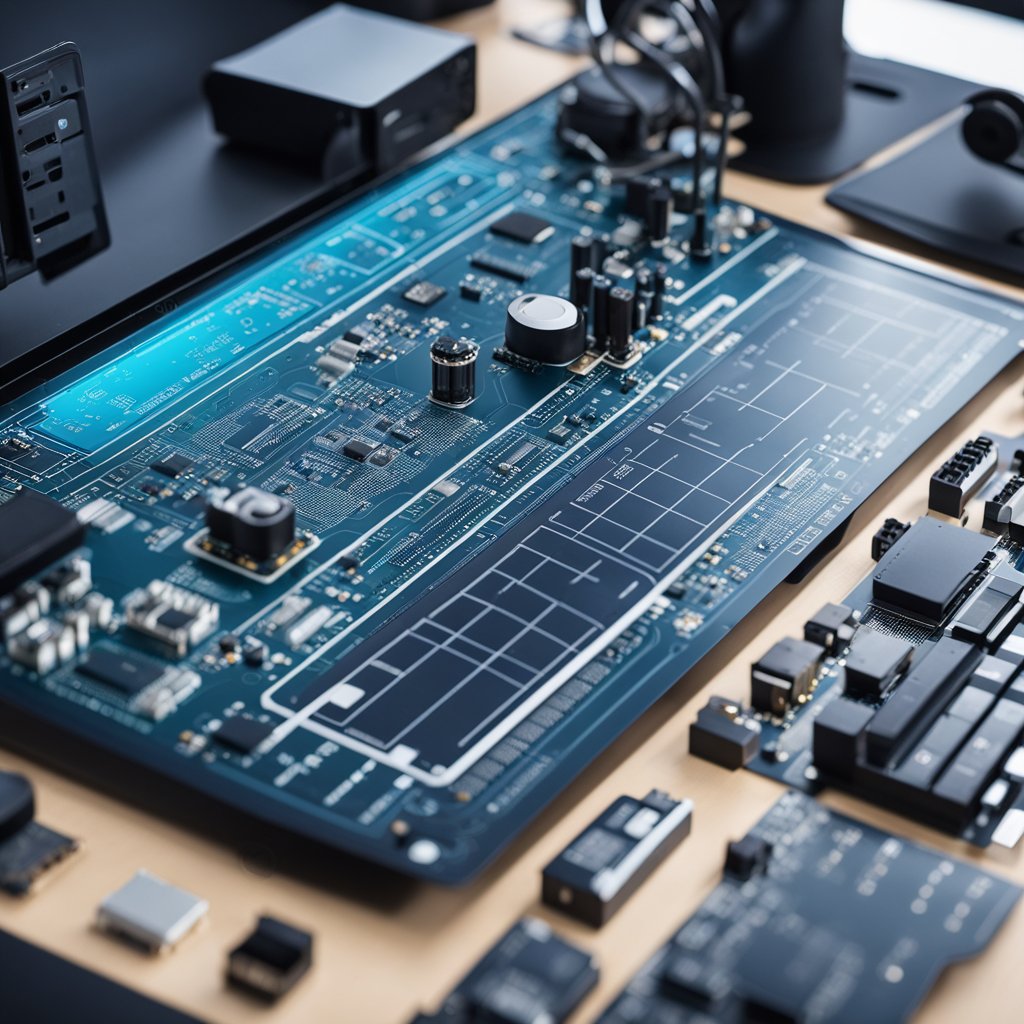The PlayStation 5, Sony’s most advanced gaming console to date, marks a significant leap in the realm of home entertainment systems. With its launch, the PS5 has ushered in the ninth generation of video game consoles, showcasing remarkable improvements in performance and gaming experiences. At the heart of the console lies a custom eight-core AMD Zen 2 CPU and a custom GPU based on AMD’s RDNA 2 architecture, a combination that provides a foundation for high-fidelity visuals and speedy processing.

Sony has equipped the PS5 with a bespoke ultra-high-speed SSD, aiming to virtually eliminate loading times and enable rapid game booting. This SSD works in tandem with the console’s 16GB GDDR6 memory to deliver seamless gameplay and quick data access. The PS5’s support for 4K graphics at up to 120 frames per second ensures that games not only play smoothly but also look stunning, with detailed textures and vibrant colors brought to life on compatible displays.
Another notable aspect of the PlayStation 5 is its support for 3D audio, which allows for an immersive sound experience that can enhance the sense of presence within games. The innovative DualSense controller, with its haptic feedback and adaptive trigger mechanisms, further contributes to the immersive experience by providing tangible, responsive player interaction with on-screen events. Through these specs, the PS5 aims to transform gaming into a more engaging and responsive form of entertainment.
Design and Build

In this section, I focus on the key aspects of PlayStation 5’s design and build quality, exploring the console’s aesthetics, controller innovations, and its capabilities for expansion.
Hardware Aesthetics
The PS5 boasts a bold, futuristic look with its towering white shell curving elegantly around a sleek black interior. It’s a considerable presence in any setting due to its size, which is necessary to incorporate its powerful hardware and cooling system. Sony has designed the PS5 to be positioned both vertically and horizontally, maximizing versatility for various entertainment setups. It also features a mixture of USB-A and USB-C ports ensuring connectivity for a wide range of devices.
Controller Innovations
The DualSense controller is a significant leap forward from its predecessor, introducing haptic feedback and adaptive triggers that offer immersive tactile sensations; these innovations enhance the gaming experience by providing a more responsive feel to in-game actions. With a built-in microphone and a more ergonomic design, the DualSense positively impacts gameplay, giving players heightened control and comfort.
Expansion Capabilities
Sony has equipped the PS5 with an accessible NVMe SSD slot, allowing me to easily expand the console’s storage. The PS5 also supports external storage solutions via its USB ports, enabling me to use off-the-shelf drives for storing PS4 games and backing up data. The PS5 Digital Edition omits the disc drive, catering to users who prefer digital downloads, while the standard edition provides the added versatility of using physical media.
Internal Architecture
With the PlayStation 5, my aim is to provide you with a deep dive into the intricate world of its internal architecture. The PS5’s design is a testament to modern computing and gaming advancements leveraging substantial power from its CPU and GPU, complemented by its ultra-fast memory and innovative storage solutions.
Central Processing Unit
The heart of the PS5 is an eight-core AMD Zen 2 CPU. This processor is a powerhouse, operating with 16 threads and having a variable frequency that reaches up to 3.5 GHz. It’s tailored precisely for the unique demands of gaming, providing not just raw performance but also efficiency.
Graphics Processing Unit
Visuals on the PS5 are driven by a custom AMD RDNA 2-based GPU. This graphics processing unit supports cutting-edge features like hardware-accelerated ray tracing, providing immersion through realistic lighting, shadows, and reflections. It’s a significant leap forward in delivering high-fidelity graphics in real-time gaming environments.
Memory and Storage
Memory: The PS5 boasts a substantial 16GB of GDDR6 RAM with a 256-bit memory interface. This results in a lightning-fast memory bandwidth of 448GB/s, meaning my games load quickly and run smoothly.
Storage: A specialized and custom 825GB SSD is my storage cornerstone, pushing the boundaries of speed to dramatically reduce loading times. This is not your standard storage; it’s a high-speed NVMe drive. The PS5 also allows for expanding storage with an additional NVMe M.2 SSD, catering for future storage needs without compromising performance.
Gaming Ecosystem
In my exploration of the PlayStation 5’s gaming ecosystem, I will highlight its robust game library, the convenience of backward compatibility, and the seamless integration of peripheral devices.
Game Library
The PlayStation 5’s game library is a testament to its advanced capabilities, offering a diverse range of titles from vividly immersive AAA games to innovative indie creations. I’ve witnessed the growth of this library fostering a rich and varied gaming experience, with notable PS5 exclusives further enhancing its appeal. Thanks to the console’s powerful hardware, games on the PS5 not only boast improved graphics and performance but also benefit from reduced loading times, thanks to its high-speed SSD.
Backward Compatibility
Sony acknowledges the value its audience finds in the vast game catalog from the previous generation. Consequently, the PlayStation 5 offers backward compatibility for the majority of PlayStation 4 titles, including both base PS4 games and those optimized for PS4 Pro. This feature ensures that players like me can continue enjoying our favorite PS4 titles on the new console, with many games receiving enhancements such as higher frame rates and resolutions due to the PS5’s superior hardware.
Peripheral Compatibility
Peripheral compatibility is a crucial aspect of the PlayStation 5’s gaming ecosystem. My experience with PS4 peripherals on the PS5 console has been largely positive, as it supports a range of devices including controllers and even the PlayStation VR headset. This compatibility extends to cross-generational play, allowing me to use my DualShock 4 controller with supported PS4 games running on the PS5. However, for an optimal experience with PS5 titles, the new DualSense controller—with its advanced haptic feedback and adaptive triggers—is required.
Audiovisual Experience
In my examination of the PlayStation 5’s capabilities, I’m particularly struck by its sophisticated audiovisual features. With a focus on high-fidelity graphics and cutting-edge audio technologies, the PS5 sets a new standard for console gaming experiences.
Graphics Features
The PlayStation 5 showcases impressive graphics capabilities, anchored by its custom GPU which offers 10.28 teraflops of power with 36 compute units running at 2.23 GHz. This robust hardware enables the console to support ray tracing acceleration, a technology traditionally found in high-end PCs that simulates how light behaves in the real world. This results in highly realistic lighting, shadows, and reflections in PS5 games.
The console’s capability to deliver 4K resolution at 120 frames per second enhances the visual fidelity, ensuring games not only look stunning but also run smoothly. Additionally, with Variable Refresh Rate (VRR) support, the PS5 is able to minimize screen tearing, creating a more immersive and visually consistent gaming experience.
- Ray Tracing: Real-time rendering of light and shadow
- Teraflops: 10.28 for GPU power
- Frame Rates: Up to 120fps
- VRR: Supports smoother visuals
Audio Technologies
My attention then turns to the audio side of the PS5, which is equally groundbreaking. The console’s Tempest 3D AudioTech engine is capable of handling hundreds of sound sources to create a deeply immersive 3D audio experience. This tech gives me the sense of a more expansive and realistic soundscape, with sounds seeming to come from every direction in three-dimensional space.
For gamers using headphones, this 3D audio experience is particularly pronounced, but the benefits are not exclusive to headphone users. The PS5’s audio system is designed to work with TV speakers and sound systems as well, providing a versatile and comprehensive audio experience regardless of the user’s setup.
- 3D Audio: Tempest 3D AudioTech for immersive sound
- Specifications: 24-bit/48kHz lossless PCM 7.1 channel audio
By integrating these advancements in graphics and audio, the PlayStation 5 offers a level of immersion that I find to be unparalleled in console gaming.
Connectivity and Interface
In my assessment of the PlayStation 5, connectivity and user interface are integral components that bridge the gap between hardware prowess and user experience. My examination covers the specific ports available for various connection needs and the design aspects of the user interface that enable smooth navigation and control.
Ports and Connectivity
I note that the PS5 is well-equipped with diverse ports to support different connection needs. Specifically, the console features:
-
Front Ports:
- USB Type-A port (Hi-Speed USB)
- USB Type-C port (SuperSpeed USB 10Gbps)
-
Back Ports:
- Two USB Type-A ports (SuperSpeed USB 10Gbps)
- Ethernet port for wired internet connectivity
- HDMI 2.1 output port for video out
Moreover, these ports facilitate broader functionality. For instance, the USB ports enable connection devices ranging from extended storage options—such as external HDDs and SSDs—to the DualShock 4 controller. Importantly, HDMI 2.1 support implies compatibility with higher video resolutions and refresh rates, including 4K at 120Hz, which is a significant boon for gamers.
However, it is pertinent to mention that external storage cannot be utilized via the front USB-C port, and that users should check device specifications for compatibility.
User Interface
I find the PS5’s user interface to be intuitive and refined, providing a fluid transition from the main home screen to various functionalities. Key highlights include:
- Media Remote: A convenient accessory for multimedia navigation
- HD Camera: Integration for streaming and content creation
- Pulse 3D Wireless Headset: Support for immersive audio, easily accessible through the interface
The interface is polished and user-centric, offering a seamless connection to the PlayStation Store, game libraries, and social features. Notably, the home screen is where I access most of the console’s functions, designed to provide a central hub for gaming and entertainment activities. In sum, my analysis underscores a robust and clear-cut user interface on the PS5 console, emphasizing ease of use and quick access to all features.
Frequently Asked Questions
In this section, I’ll clarify some of the most common inquiries regarding the PS5’s performance, technical specifications, and enhancements.
What are the differences in performance between the PS5 and a high-end PC?
The PS5 is a dedicated gaming console with impressive hardware optimized for gaming; however, a high-end PC offers a broader range of hardware customization and potential upgrades, often leading to higher performance capabilities in terms of raw processing power, graphics, and versatility.
How does the PS5’s GPU compare to the latest gaming graphics cards?
The PS5’s GPU is a custom RDNA 2-based chip from AMD that offers real-time ray tracing and can run up to 10.28 TFLOPs. While powerful for a console, this GPU may not match the raw performance of the latest high-end PC graphics cards, which can exceed this level of throughput and offer more robust feature sets.
What are the capabilities of the PS5 in terms of resolution and frame rate?
My PS5 supports gaming at up to 4K resolution at 120Hz refresh rate for smoother gameplay. It is also equipped to support up to 8K output in certain contexts, though content and games that exploit this feature are limited.
How does the memory configuration of the PS5 enhance gaming experiences?
The PS5 uses a bespoke 825GB SSD with a raw read bandwidth of 5.5GB/s, which drastically reduces loading times and enhances the overall gaming experience by facilitating faster data streaming, thus allowing for more expansive and immersive game worlds.
What improvements does the PS5 Pro offer over the standard PS5?
As of my knowledge cutoff date, Sony has not officially released a “PS5 Pro” model. Therefore, I cannot provide specifics on improvements a PS5 Pro would offer over the standard PS5.
Can the PS5 support 8K gaming, and what are the requirements?
Yes, the PS5 is 8K ready, indicating it has the potential to support 8K resolution gaming. However, 8K gaming would require an 8K compatible display, appropriate HDMI 2.1 support, and games that are designed to run at that resolution, which are quite rare at the moment.
Leave a Reply